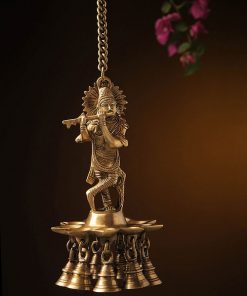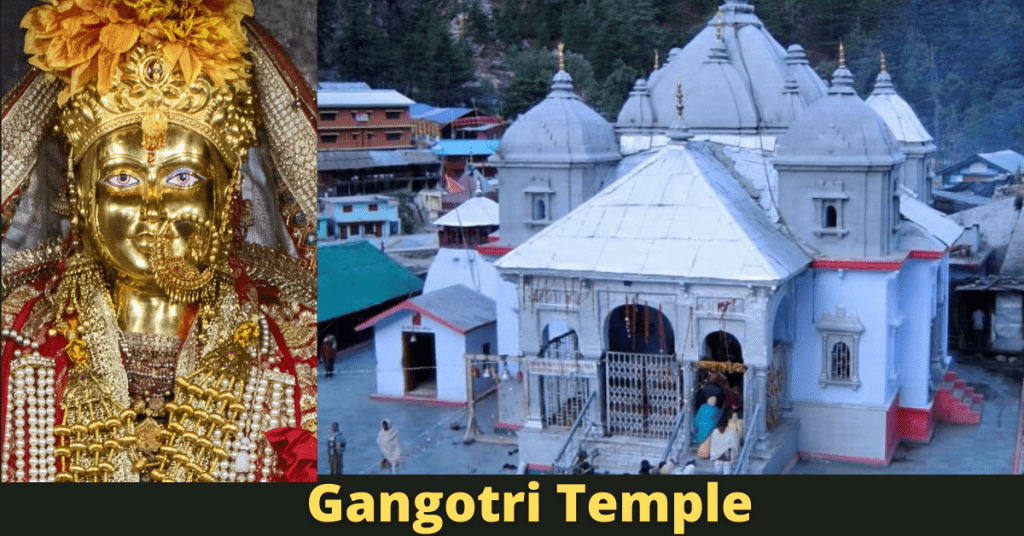-
×
 Krishna Brass Hanging Diya
1 × ₹ 1,999.00
Krishna Brass Hanging Diya
1 × ₹ 1,999.00
Temples, Uttarakhand Temples
Gangotri Temple: History,Story, Pooja and Darshan timings, rituals
Gangotri Temple is the birthplace of the river Maa Ganga, one of the four Chota Char Dham of India. We Indians love and worship our nature. We treat the trees, animals, mountains, and rivers as Gods. It is said that during the era of Pre Vedic-Period, people found their God in nature. Even the terracotta articles of Indus Valley Civilization describe the love and respect of people towards the mother goddess and Lord Pashupati. For millions of devotees, Gangotri is not just a place of worship but is connected with their emotions.
Gangotri – The Devine babbling
Gangotri is situated in the Uttarkashi district of Uttarakhand state. At the height of 3048 meters, Gangotri fascinates every Yatri. This sacred place is just 99 km from Uttarkashi and is the highest place of worship of Maa Ganga. This Hindu pilgrimage site is on the banks of the river Bhagirathi, the initial or ‘origin’ name of the river Ganga located in the Greater Himalayan Range. River Bhagirathi which is called Ganga in Devaprayag meets the Alaknanda. This 2525km stretch of water is the source of livelihood, agriculture, and industries for crores of people
The History of Gangotri
The place Gangotri is recognized with the stories of the Mahakavya Mahabharata. The first is about the river’s origin, and the second is about the Deva Yajna of the Pandavas.
- Sooryavanshi king, the Bhagirata descendent of Sagara, brought Maa Ganga to earth. The story goes like this Indra stole King Sagara’s Ashwamedha Yajna Horse. Sagara sent his sixty thousand sons in search of the horse. They found the horse in sage Kapila’s ashram. They interrupted the meditation of the sage in the misconception. Angry Kapila burned all of them with his ascetic gaze. For the salvation of those sixty thousand people, as per sage Kapila’s advice, Aayushman, the grandson of Sagar, sent his grandson Bhagirata for the mission. After pleasing Lord Bhrama and Lord Shiva, Bhrama allowed Ganga, the river of Heaven, to descend to earth, but the force of the flow of Ganga was about to destroy the earth. Hence shiva, through the knot of his hair, restricted her flow. The place where she descended is the famous pilgrim site Gangotri, and we call her Bhagirathi.
- This story is about Deva Yajna of Pandavas. After the battle of Mahabharata, Pandavas wished to perform a Yajna for the salvation of their relatives. According to the legend, the venue of Yajna is Gangotri.
The Gangotri Temple architecture
The architecture of the temple with its historical significance takes us to the 18th century. In the place of a small shrine, Nepali army general Amar Singh Thapa built the present-day temple. The elegant structure of white granite can pull anyone toward it. With a small apex of five which is 20 ft in height, the temple is built in the Nagara style of architecture. Nagara is a pattern of architecture commonly found in the northern part of India. The temple is also incorporated with the Katyuri style of architecture, a famous form in Nepal and its foothills. Hence the temple is the perfect example of the Indo-Nepali style of architecture. The inner sanctum of this east-facing temple consists of the idols of the Goddess Yamuna, Goddess Saraswati, Goddess Annapurna, etc
Pooja rituals of the goddess Ganga.
With the aarti ceremony by the pandits of the Semwal family, the rituals of the Gangotri temple will start. The interesting fact about Gangotri Temple is carrying the idol of the Goddess to Mukhaba. The temple will be closed from the day of Diwali every year. On the day of Akshaya Tritiya, the temple will be open to all the devotees. During the time between Diwali and Akshaya Tritiya Maa Ganga is being worshipped in the Mukhba Village near Harsil.
The way to Gangotri Temple.
Among the Char Dham, Gangotri is the easiest to reach. The place can be accessed by road and air. Gangotri is almost at a distance of 530 km from Delhi. The networks from other cities also have easy connectivity to Gangotri, which leads directly to the entrance of the temple. At a distance of 249 km, the Rishikesh Railway station is reachable, which is the nearest. Private cabs and taxi services are also available from the station. People who travel by air can opt for Jolly Joint Airport, the nearest airport situated in Deharadun. People also choose luxury buses to travel from the airport to Gangotri. Helicopter services add a fascinating chapter to the Gangotri diaries. The view of the place from above can make your journey memorable, which is an easy and quick travelling option to reach Gangotri. Along the road to Gangotri, various food stalls, restaurants, refreshment shops, pooja material shops, lodges, etc., are available.
Pooja and Darshan timings.
Darshan Open : 06:30 AM to 09:00 AMMaha Bhog ( closing hours): 09:00 AM to 09:10 AMDarshan Open09:10 AM to 02:00 PMDarshan Close (Shayan Time): 02:00 PM to 03:00 PMDarshan Open: 03:00 PM to 06:30 PMEvening Aarti: 06:30 PM to 07:45 PMBhog :08:00 PM to 08:10 PMDarshan Open: 08:00 PM to 09:30 PM
Best Places To Visit Near Gangotri
- Bhagirath Shila: According to the Puranas, Bhagiratha, who brought Maa Ganga to earth, prayed to Lord Shiva and Lord Brahma here. The holy rock on which he did his tapas is now well known as Bhagirath Shila.
- Pandava Gufa: Pandav Gufa, which is just 1.5 km from Gangotri, is famous for the story from Mahabharata, according to which Pandavas took shelter here en route to Kailash.
- Kedartal :- Kedartal also known as ‘Shiva’s Lake’ is one of the highest lakes in Uttarakhand. 17km from Gangotri,
- Gaumukh Trek- 18 km From Gangotri
- Dharali -19 km From Gangotri
- Tapovan Trek – 20 km From Gangotri
- Uttarkashi – 97 km From Gangotri.
Gangecha Yamunechaiva Godavari Saraswati Nramade Sindhu Kaveri Jalesmin Sannidhim Kuru. This is the hymn of Sanskrit, which explains the importance of the rivers in India. We Indians not only treat these rivers as a god but also as a mother and Maa Ganga is the way of salvation. We pollute such rivers, which wash out our sins. The spirituality, the purity of the river Ganga and the divine vibes of the pilgrim site Gangotri are the must-go places in a lifetime. Let us use these sources wisely and let Maa Ganga bless our future generations too.
Read More:Kedarnath Temple:History


Awesome information about the place
Good history research ❤
Excellent
Marvelous
THANKS FOR THE BRIEF EXPLANATION..😍 ITS DEEP & BRILLIANT.. WE WANT MUCH MORE PLACES INFORMATION LIKE THIS ☺️